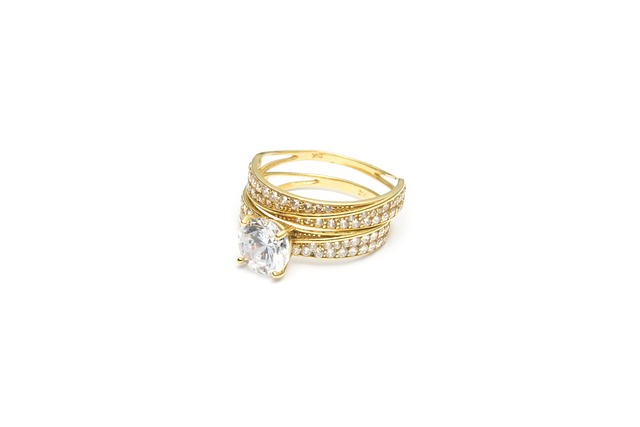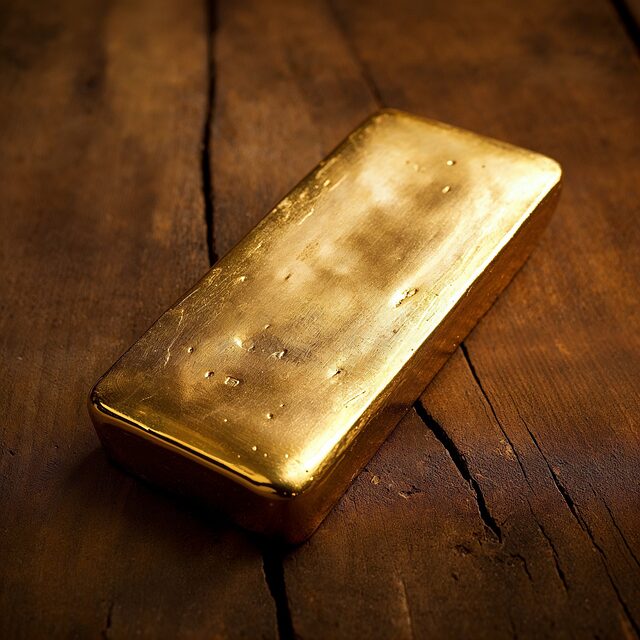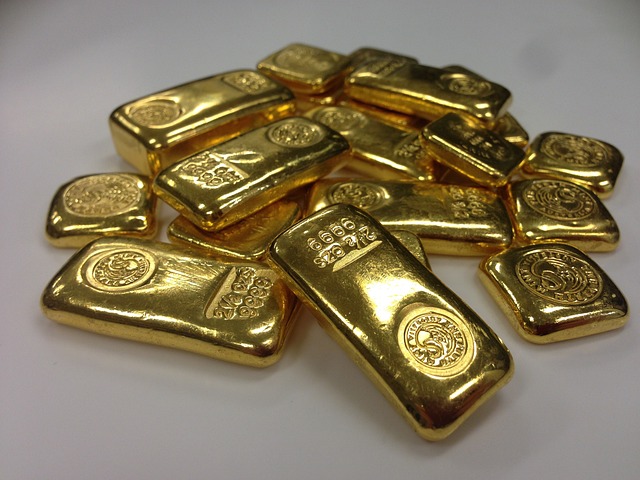A self-directed IRA enables investors to diversify their retirement portfolios by investing in physical gold, silver, platinum, and palladium. These accounts adhere to IRS regulations that govern the types of precious metals allowed—such as coins or bars meeting specific purity standards—and require secure storage and a specialized custodian to maintain tax-advantaged status. Investors must work with an IRS-approved dealer for purchasing metals, with direct shipment to the custodian to preserve the IRA's tax benefits. The process involves a careful selection of both a trustee and a custodian experienced in handling alternative assets within an IRA framework. To comply with IRS rules, all transactions are subject to reporting, and withdrawals must adhere to regulations to avoid taxes and penalties. It's advisable to seek professional advice when navigating these investments to ensure compliance and maximize the benefits of precious metals in a retirement portfolio.
Navigating the transition of traditional retirement savings into tangible assets like gold requires a strategic approach. This article delves into the intricacies of transforming an Individual Retirement Account (IRA) into a gold investment through the establishment of a self-directed IRA tailored for precious metals. We will explore the nuances of self-directed IRAs, the steps to initiate one, and the stringent IRS regulations that govern such investments. Additionally, we will guide you through selecting a trustworthy custodian, the acquisition process of gold within your retirement account, and the benefits this diversification can offer for your financial future. Embark on this journey to empower your retirement savings with the timeless value of gold.
- Understanding Self-Directed IRAs for Precious Metals
- Steps to Open a Self-Directed IRA for Gold Investments
- IRS Rules Governing Gold in IRA Accounts
- Selecting a Trustee and Custodian for Your Precious Metals IRA
- The Process of Acquiring Gold for Your Retirement Account
Understanding Self-Directed IRAs for Precious Metals

An individual retirement account (IRA) traditionally invests in stocks, bonds, and mutual funds; however, with a self-directed IRA, investors can diversify their portfolios to include physical gold, silver, platinum, and palladium. This type of IRA is distinct from conventional ones as it offers the freedom to allocate a portion of retirement savings into tangible assets that have historically served as a hedge against inflation and economic uncertainty. When considering a self-directed IRA for precious metals, it’s crucial to understand the rules governing these accounts. The Internal Revenue Service (IRS) imposes specific requirements on what can be held within a self-directed IRA, how these assets should be stored, and how transactions are managed to maintain the tax-advantaged status of the account. Investors must choose a custodian that specializes in rare metals IRAs, as these custodians facilitate compliance with IRS regulations. They ensure that the precious metals meet the purity standards set forth by the IRS and that they are held in an approved depository for the duration of the IRA’s existence. By understanding these aspects, investors can make informed decisions to potentially bolster their retirement savings with the stability and growth potential that precious metals can offer.
Steps to Open a Self-Directed IRA for Gold Investments

To initiate the process of converting your traditional IRA to a self-directed IRA that allows for gold investments, the first step is to select a trustee or custodian that specializes in alternative assets, including precious metals. This entity will facilitate your transactions and ensure compliance with IRS regulations. Once you’ve chosen a reputable trustee, you can proceed by funding your new self-directed IRA account, which can be done through a direct rollover from your existing IRA. It’s imperative to avoid any direct or indirect personal handling of the funds during this transition to maintain tax-advantaged status.
After establishing and funding your self-directed IRA, you’ll need to identify a precious metals dealer that is IRS-approved and has a proven track record of dealing with retirement accounts. The dealer must ship the gold directly to the custodian of your self-directed IRA. You cannot take delivery of the metals yourself. Collaborate closely with both your trustee and the precious metals dealer to ensure that the gold you choose meets the IRS’s purity standards for retirement investments. The dealer will assist you in selecting options that align with these requirements, such as coins or bars with a fineness of 0.999 or higher. Upon receiving the gold, your custodian will confirm its arrival and compliance with IRS rules, completing the process of diversifying your IRA into physical gold.
IRS Rules Governing Gold in IRA Accounts

According to the Internal Revenue Service (IRS), self-directed Individual Retirement Accounts (IRAs) have the capability to hold a variety of investments, including precious metals. For an IRA to legally contain gold or other similar metals, it must be established as a self-directed IRA with a trustee that is IRS-approved and allows for such investments. The IRS stipulates specific requirements for the types of metals permissible within these accounts. These include gold, silver, platinum, and palladium in the form of bars or coins that meet certain fineness or purity criteria. Coins must be recognized by the IRS as approved for IRA investments, while bullion must adhere to standards set forth by either the London Bullion Market Association (LBMA) or the Royal Canadian Mint. Additionally, these metals cannot be held personally; they must be held in custody by the trustee to maintain the tax-advantaged status of the IRA. The IRS also mandates that all transactions involving these precious metals must be reported and that any withdrawal of metals from the IRA must comply with IRS rules, including potential taxes and penalties if taken before reaching the age of 59½ or otherwise permitted by law. Investors looking to include gold in their retirement portfolio should consult with a tax professional or financial advisor familiar with these rules to ensure compliance and optimize their investment strategy within the framework of the IRS regulations.
Selecting a Trustee and Custodian for Your Precious Metals IRA

When exploring the conversion of your traditional IRA to a self-directed IRA that includes investments in gold and other precious metals, one of the critical steps involves selecting a trustee and custodian. The trustee is responsible for administering the IRA and ensuring that all transactions comply with the rules and regulations governing IRAs. For precious metals IRAs specifically, the trustee will manage the account and ensure that the metals meet the purity and eligibility standards set forth by the IRS.
The custodian, on the other hand, is a financial institution that holds the actual assets in safekeeping. The custodian must be approved by the IRS to hold precious metals within an IRA. It’s imperative to choose a reputable and experienced custodian, as they will handle the purchase, storage, and accounting of your precious metals. They must provide detailed records of all transactions and maintain the integrity of the assets within the IRA. When selecting both the trustee and the custodian, it’s advisable to consider their experience with precious metals IRAs, their track record for security and compliance, as well as their customer service reputation. A prudent approach is to conduct thorough due diligence and possibly consult with a financial advisor who specializes in self-directed IRAs before making these important decisions.
The Process of Acquiring Gold for Your Retirement Account

To incorporate gold into your retirement portfolio via an Individual Retirement Account (IRA), the process begins with establishing a self-directed IRA that permits such investments. These accounts differ from traditional IRAs as they offer more flexibility in terms of investment choices, including physical gold, gold coins, and precious metal ETFs or mutual funds. Once you have set up a compatible self-directed IRA with a custodian experienced in alternative assets like precious metals, the acquisition process can proceed.
The Internal Revenue Service (IRS) imposes strict regulations on IRA investments to ensure they are diverse and not overly concentrated in a single asset class. Therefore, it is imperative to work with an IRS-approved depository or a custodian when purchasing gold for your IRA. The chosen custodian will facilitate the transaction by arranging the purchase of eligible gold items directly from a reputable bullion dealer. It’s crucial that the gold meets the purity and fineness requirements set forth by the IRS, typically requiring a minimum of 99.5% purity for coins and bars. Once the gold has been purchased and delivered to the custodian’s approved depository, it will be inventoried and transferred into your self-directed IRA. The custodian then reports these transactions to the IRS to maintain compliance with IRA regulations. This process ensures that your investment in gold is both legal and compliant with retirement account rules.
Transitioning an IRA to include gold as an investment requires careful planning and adherence to specific IRS regulations. By establishing a self-directed IRA with a focus on precious metals, individuals can diversify their retirement portfolios in a manner that includes these tangible assets. The outlined steps from setting up the account to selecting a compliant custodian and acquiring the gold ensure that your investment strategy aligns with the rules set forth by the IRS. This transition not only offers an alternative to traditional investment vehicles but also provides a hedge against inflation and market volatility, potentially enhancing the stability of retirement savings.
